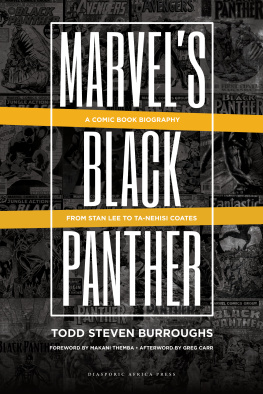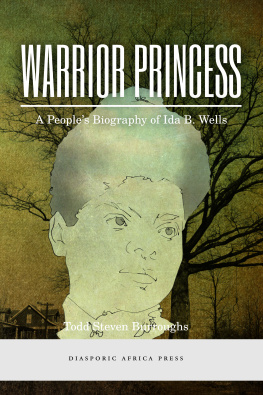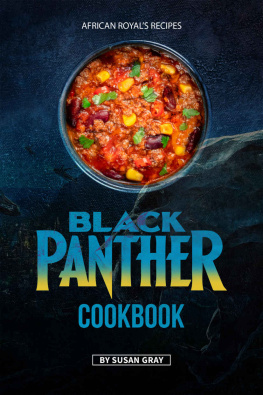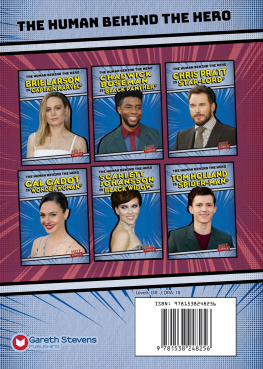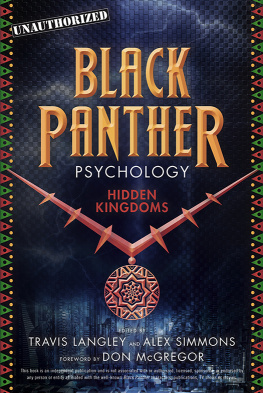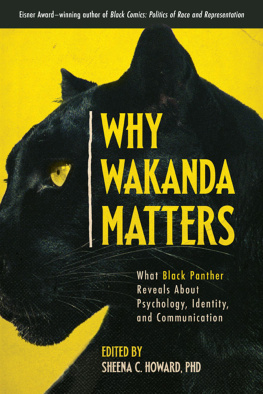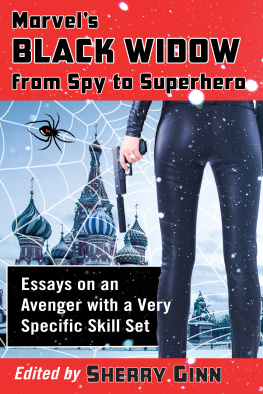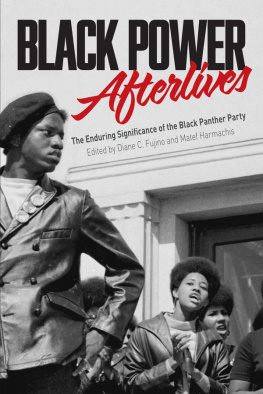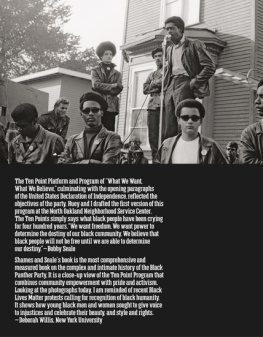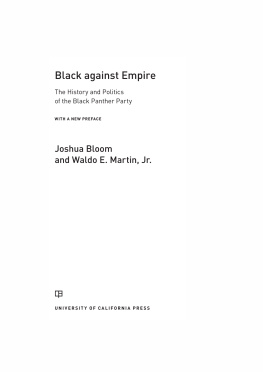INTRODUCTION
WHITE PANTHER VS. BLACK PANTHER
Black Comic Power was on-stage at the 2016 San Diego Comic-Con. The estimated 7,000 fans that crowded into Hall HThe Hall Where The Great Stuff Happensknew Marvel Studios, hosting a panel for its upcoming projects, was going to drop at least one surprise for them. Chris Hardwickthe host of Talking Dead, the after-show for the hit AMC horror drama The Walking Deadintroduced Kevin Feige, president of Marvel Studios and one of the masterminds of the Marvel Cinematic Universe, and Hall H did what it does best: give an ear-shattering roar. Marvels Captain America: Civil War had already been released to great fanboy and fangirl love-gasm earlier that year. When Feige casually shifted topics from Civil War to Black Panther, the crowd knew what was going to happen next. First appeared the films director, Ryan Coogler. Then actor Chadwick Boseman, who played TChalla to great praise in Civil War. Then Academy Award-winner Lupita Nyongo, portraying Nakia, one of the Dora Milaje, the Black Panthers female army. Then Michael B. Jordan, whose Johnny Storm was the only highlight of a terrible 2015 Fantastic Four reboot film. Jordan is playing Erik Killmonger, the Black Panthers main villain. Then Danai Gurirafan favorite Michonne from The Walking Dead and, therefore, a veteran of Hall Has Okoye, the head of the Dora Milaje. When asked by Hardwick for some comments, Nyongo responded that it was her first Comic-Con and that, as Nakia, Im really looking forward to kicking some ass.
For the first time since the Blade movies starring Wesley Snipes, a Black Marvel superhero will have his own Hollywood film franchise. TChalla has come a long way from being derided in Christopher Priests ongoing series in the 1990s and 2000s, as the guy always standing in the rear of old Avengers photos. An MCU franchise within a franchise is a new, positive development for those who want to see more heroes of color in the movies.
This book, a lark long in the back of my mind that turned into a work of sweat and love, is about a character I never cared about as a superhero. He wasnt relevant to my young African-American life. Growing up as a superhero-obsessed tyke in the 1970s, I saw the 1967 Spider-Man animated series (the one TV listings would label Spiderman, mistakenly without the hyphen between Spider and Man) and the Batman and Superman live-action series every weekday in second-run syndication, and watched every version of The Superfriends every Saturday morning on ABC. I even devoured those gawd-awful CBS Spider-Man live-action specials, as well as the two almost-as-bad Captain America and Dr. Strange movies that aired on that network. The fact that CBS also aired quality live-action superhero shows like The Incredible Hulk and, in its second and third seasons, Wonder Woman (an ABC refugee) almost made up for those terrible also-rans. And of course, I loved Superman: The Movie.
During that decade, I slowly discovered comic books. Marvel became my favorite publisher. I think that was due to my all-time favorite characters, the Fantastic Four and the Silver Surfer, with Captain America as a close runner-up. (I count the FF as one character.) My sixth-grade teacher had a copy of Bring On The Bad Guys, the third volume of the Simon and Schuster trade paperbacks that reprinted early Marvel stories with writer Stan Lees introductions. Thats where I discovered the FF, the Surfer, and Cap in separate epic tales. I loved that book so much she wound up giving it to me.
I still remember my shock when I found out my favorites had been animated! Hanna-Barbera decided to syndicate, as a weekday wheel, all its 1960s Saturday-morning superhero-action fare. Hanna-Barberas World of Super-Adventure, as the syndication wheel called itself, became my all-time favorite animated series, right next to the syndicated Battle of the Planets (the American-ized, Star Wars-ish version of Japans very cool Science Ninja Team Gatchaman), Marvel Men, the second-run syndication of the 1966 Marvel Superheroes animated show (happily, Cap was a feature), and Superheroes!, the syndicated daily run of the Filmation 1960s DC animated cartoons of the same time. The Hanna-Barbera series, I quickly found out, had a Fantastic Four cartoon! I sat in front of the television every weekday, waiting to see if The Fantastic Four would come on. I was often disappointed, but I learned about great Hanna-Barbara superheroes like Space Ghost, Birdman, and others. When I saw the FF and my other all-time favorite character, the Silver Surfer, fight some giant named Galactus, in front of another giant named the Watcher, I lost my mind and became a one-person Hall H, a certified Marvel Zombie. I never looked back.
But what about the Black Panther?
As I grabbed any comic that had the Marvel brand in the early 1980s, I learned that there was a character named the Black Panther. He had an all-black suit (or, sometimes, dark blue) and no powers. How boring. His abilities, if any, seemed limited to jumping out of the way when attacked. In CryVengeance!a back-up story in the 100th issue of Marvel Team-Up (which I bought because the lead story had Spider-Man team up with the FF)I learned that TChalla had a relationship with Storm of the X-Men. Beautiful John Byrne/Bob McLeod art, but eh. He was still just some guy who jumped around a lot. Snore.
In the anti-apartheid mid-80s, I refashioned myself as a Black radical and gave away all my comics. Years after that, I became a working professional. Years after that, in the mid-1990s, I became a grad student and gradually returned to comic book geekdom. I was at the comic book store in 1998 and one of the employees put Black Panther, vol. 3, no. 1, in my hand. I was amazed with the extraordinary dialogue and plot by Christopher Priest and the incredible painted art by Mark Texeira. (I remembered being excited about the book not because of the character or the art, but the writer; Priest had floored me with an excellent but short-lived DC comic named Xero, about a Black male assassin who wore a white-male mask.) My mind was so blownfor a second timethat I gave away copies of the first issue, and later the trade paperback of the first story arc, TheClient. I was hooked and, keeping Captain America demoted (at least consciously), I had a third all-time favorite Marvel character. I bought three copies of every issue for 49 issues of that entire 62-issue run, and even received copies of the run in French trade paperback collections, thanks to a very generous French online Black Panther Message Board pen pal.
I began to find back issues of the Panther. I discovered Jungle Action and a writer named Don McGregor. Even Jack Kirby, the co-creator of the Fantastic Four and the Silver Surfer (and Panther), had done his own Panther run! In a few years, I was absorbing the character whole; if not a Black Panther expert, I was someone who strove to become very familiar with his history.
And up until Priest showed up in vol. 3, that history was a white one. The Panther was birthed by Marvel founders Stan Lee and Kirby (birth names: Stanley Leiber and Jacob Kurtzberg), two white Jewish men. He was created in 1966, the same year that the Student Nonviolent Coordinating Committee worked to politically organize Black residents of Lowndes County, Alabama. The Lowndes County Freedom Organization chose as its logo a drawing of a black panther. Some activists in California asked to use the image for a new organization they were founding, the Black Panther Party for Self-Defense. This was the year that TChalla premiered in

